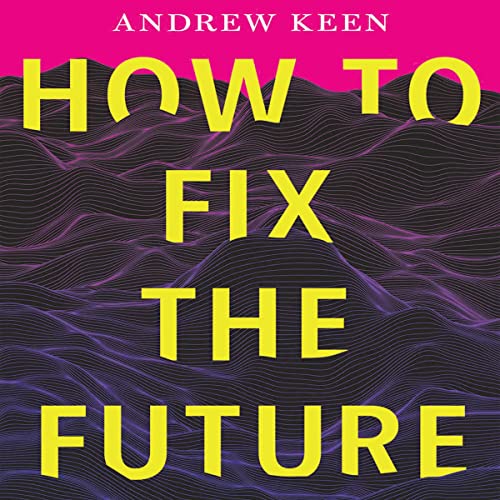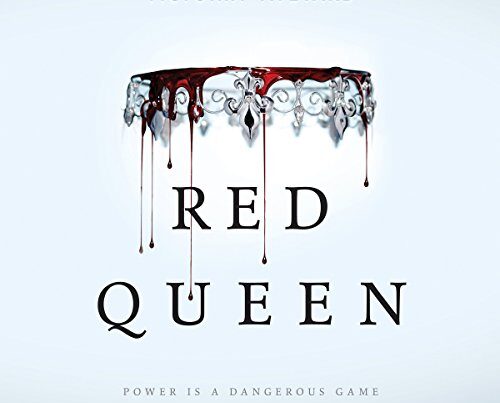Andrew Keen’s “How to Fix the Future” audiobook explores solutions to modern technological and societal challenges. It emphasizes proactive measures for a better future.
Andrew Keen’s “How to Fix the Future” delves into addressing the pressing issues of our digital age. Keen, a well-known tech critic, examines the adverse effects of technology on society. He suggests practical solutions to these challenges. The book highlights the importance of human agency and responsibility in shaping a positive future.
Keen’s insights draw from historical lessons and current innovations. He advocates for collaboration between governments, businesses, and individuals. This approach aims to create a balanced, ethical, and sustainable technological landscape. His audiobook serves as a guide for those seeking to navigate and improve our digital world.

Introduction To ‘how To Fix The Future’
Andrew Keen’s “How to Fix the Future” audiobook explores innovative solutions to modern challenges. Dive into insightful discussions on technology, society, and the future.
Andrew Keen’s Vision
Andrew Keen is a well-known author. He focuses on technology’s impact on society. In his book, he explores solutions to modern problems. The book offers practical steps. Keen believes technology can be fixed. He emphasizes human values. Keen’s vision is both hopeful and realistic.
The Audiobook Experience
The audiobook is easy to follow. It features Andrew Keen’s own voice. This adds a personal touch. The narration is clear and engaging. Listeners feel connected to the content. The audiobook is perfect for busy people. It allows learning on the go. Every chapter is concise and informative.
The Digital Dilemma
Technology has many benefits. It makes our lives easier. But it also brings challenges. Privacy is at risk. Social interactions are changing. Many people feel isolated. Digital addiction is growing. Children spend too much time on screens. This affects their health.
Personal data can be stolen. Cyberbullying is a big problem. People share too much online. This can be dangerous. Fake news spreads quickly. This confuses people. It is hard to know what is true. Digital footprints last forever. Be careful what you post.
Historical Lessons For The Digital Age
History offers many lessons. We can learn from past mistakes. Many old solutions are still useful. They can help solve new problems. For example, the industrial revolution brought big changes. People had to adapt quickly. Today, we face similar challenges with technology. We need to be smart and use old wisdom.
Old solutions can be very helpful. They can guide us in the digital age. For instance, education was key during the industrial age. It helped people learn new skills. Now, we need new skills for the digital world. Schools should teach coding and digital literacy. This way, everyone can keep up with technology.

Five Tools For Fixing The Future
Governments can create laws to protect people. These laws can stop big companies from taking advantage. They can also limit pollution and ensure fair wages. Regulation can make the world safer.
People should have control over their data. They should know how it is used. Tools can help users protect their privacy. Empowering users can lead to better choices online.
New ideas can drive change. Startups and small businesses can challenge big companies. Competition can lead to better products and services. Innovation can improve our future.
Companies should care about people and the planet. They can help by reducing waste and using clean energy. Social responsibility can create a better world for everyone.
Learning about technology and its impact is important. Schools can teach kids about digital safety. Awareness can help people make informed decisions. Education can prepare us for the future.
Global Perspectives And Solutions
Various countries have unique solutions for modern problems. Estonia leads in digital governance. They offer online services for almost everything. Singapore focuses on smart nation initiatives. They use technology to improve urban living. Denmark excels in green energy. Wind power generates most of their electricity. These case studies inspire other nations to innovate.
International cooperation is essential for global progress. Countries share best practices and policies. This helps in addressing common challenges. The European Union sets a strong example. They work together on digital and environmental issues. The United Nations also plays a crucial role. They facilitate global policy discussions. Cooperation leads to better solutions for everyone.
Challenges And Criticisms
Many people are skeptical about Andrew Keen’s ideas. They think his solutions are not practical. Critics argue that his views are too extreme. Others feel he overlooks important factors. Some believe his ideas are too idealistic. They question if these solutions can work in real life.
Andrew Keen’s solutions have certain limitations. Some solutions may not be easy to implement. They might require significant changes in society. People worry about the cost of these changes. There is concern about the time needed to see results. Others doubt if everyone will agree on these changes. Many think more research is needed before action.
The Role Of Individuals And Communities
Grassroots movements are essential for change. They start with small groups of people. These groups work together to solve problems in their communities. Local actions often lead to bigger changes. People in these groups share ideas and support each other. This helps them grow stronger.
People need to know about important issues. Raising awareness is the first step. Schools and local events can help. Teaching children about these issues is crucial. Informed citizens are more likely to take action. Simple actions can lead to big changes. Recycling and using less plastic are examples. These actions inspire others to do the same.

Looking Ahead: The Future Of The Future
Emerging technologies bring many changes. New inventions can help solve big problems. But these technologies also raise ethical questions. People need to think about what is right and wrong. It’s important to use technology wisely. We must make sure these tools do not harm anyone.
It is good to stay optimistic about the future. Believing in a better world can inspire action. Yet, staying realistic is also key. Not every problem has a simple solution. A balance of hope and reality can guide us well. This way, we can build a brighter future.
Conclusion
Andrew Keen’s “How to Fix the Future” audiobook offers valuable insights for creating a better tomorrow. Embrace its lessons for a sustainable future. This audiobook guides listeners through innovative solutions to today’s challenges. Dive into Keen’s work to inspire change and progress.
Discover actionable steps for a brighter future.



